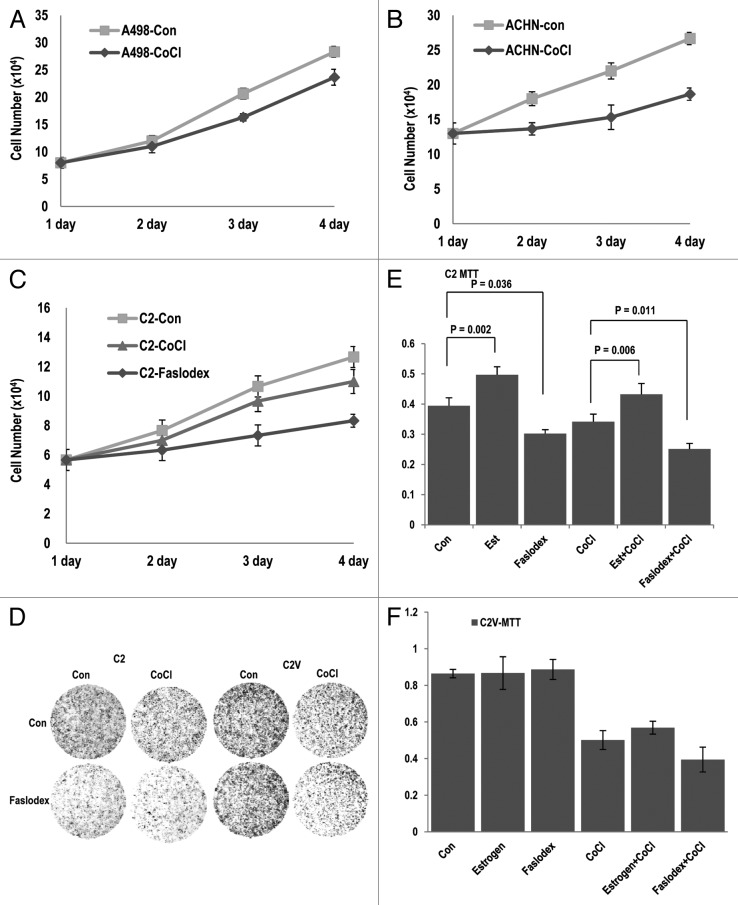Figure 6. Blocking of ER-α suppresses cell proliferation in VHL-deficient tumors. (A and B) Hypoxia-induced growth arrest is dependent on pVHL status. The growth of cells that lacked VHL (A498; A) was not suppressed by hypoxia. In contrast, ACHN (VHL-positive) cells were sensitive to hypoxia-induced growth suppression. Each cell line was treated with CoCl2. Cells were maintained for 4 d, and cell numbers were calculated daily. (C) The inhibition of ER-α is more effective than hypoxia in cell growth suppression in VHL-deficient cells. C2 cells were incubated in CoCl2 or Faslodex-treated medium for 4 d. (D) Comparison of the growth of C2 and C2V cells. Differentially from C2 cells, where hypoxia did not notably suppress cell growth, C2V cells showed the sensitivity to hypoxia-induced growth suppression. In contrast, the growth of C2 cells was reduced by Faslodex. Cells were incubated with CoCl2 or Faslodex-containing medium for 3 d and fixed with PFA. Cells were visualized by staining with trypan blue. (E and F) pVHL is a critical factor for the determination of hypoxia- or Faslodex-induced growth suppression. Compared with C2V cells, in which Est or Faslodex did not alter cell viability, C2 cells were affected by Faslodex and Est. The opposite effect was observed with CoCl2 treatment. Cells were incubated with the indicated chemicals for 4 d. Cell viability was determined by a MTT assay.

An official website of the United States government
Here's how you know
Official websites use .gov
A
.gov website belongs to an official
government organization in the United States.
Secure .gov websites use HTTPS
A lock (
) or https:// means you've safely
connected to the .gov website. Share sensitive
information only on official, secure websites.
